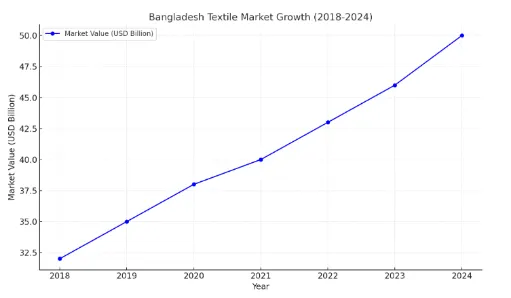Why Bangladesh
Global Apparel Powerhouse: Bangladesh is a dominant player in the global textile and apparel market, ranking as the second-largest apparel exporter in the World. The country produces high-quality garments at competitive prices, making it an essential sourcing destination for international brands and retailers.
Cost-Effective Production with Skilled Labor: Bangladesh offers a unique combination of low production costs and skilled labor, enabling manufacturers to achieve both efficiency and quality. The country's workforce is experienced in handling large-scale production, ensuring timely delivery of bulk orders for global supply chains.
Sustainability Leadership: Bangladesh is setting a benchmark in green and sustainable manufacturing, with over 200 LEED-certified factories and a growing emphasis on eco-friendly production. Partnering with Bangladesh enables manufacturers to align with global sustainability goals and meet increasing consumer demand for ethical and responsible fashion.
Leading Economy in South Asia: In fiscal year 2021–2022, Bangladesh registered a GDP growth rate of 7.2% after the global pandemic. Bangladesh is one of the fastest-growing economies in the world, $420.52 billion (nominal; 2023 est.) $1.48 trillion (PPP; 2023 est.) The government of Bangladesh actively supports the textile sector with favorable policies, including tax exemptions, export subsidies, and the development of special economic zones (SEZs).
Strategic Market Access: Located at the crossroads of Asia, Bangladesh provides strategic access to key markets in Europe, North America, and Asia. The country’s robust trade agreements and preferential tariffs with major markets offer global manufacturers a competitive edge in reducing costs and expanding their reach.
By focusing on Bangladesh, global manufacturers can tap into a thriving market with unparalleled growth potential, sustainability initiatives, and a proven track record in global apparel supply chains.


In Figure
Bangladesh's textile machinery market is currently valued over billion and is expanding rapidly. This growth is driven by substantial investments in man-made fiber production and the implementation of Industry 4.0 technologies, such as automation and smart machinery. To achieve its goal of $300 billion in merchandise exports by 2041, the government and private sector are prioritizing investments in textile machinery and sustainable technologies to enhance productivity.








